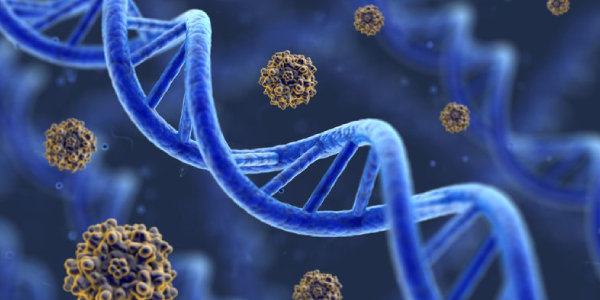As he chats with the young mother, the doctor flicks a cotton swab into the mouth of her infant son, he inserts the sample into a machine, which extracts DNA from the mucus cells and compares it with the genetic material on a dime – size chip. Minutes later a computer printer begins to spit out a list of the infant’s genes. Fortunately, all but a few of the genes are labeled “normal”. It is those few that the doctor discusses as he explains the result to the mother. “You son’s genetic inheritance is generally good, “ he says, “but he is somewhat predisposed to skin lesions. So starting right away; he should be protected against excessive exposure to the sun. “and the doctor warns, “he may well be susceptible to cardiovascular disease later in life. To lessen his risk, after about age two he should be lifelong low – fat, high – fiber diet.”
This view of a visit to the pediatrician’s office is not so futuristic, it could become a reality within the next few decades. Our increasing understanding of genetics is leading not only to the identification of risk factors in children, but also to the development of new treatments for everything from serious physical illness, such as cancer, to psychological disorders like schizophrenia and depression.
This potential medical revolution has been heralded, in part, by unlikely achievement : the birth of Dolly, a rather ordinary looking sheep with an extraordinary genetic background. Dolly was the first animal to be cloned from the cells of an adult sheep, making her an exact genetic replica of her “parent”. Dolly was soon followed by a menagerie of cloned animals, each genetically identical to another member of its species.
More Info About : 5 Ways Social Media Can Improve Your Medical Practice
The ability of scientists to produce clones raises new possibilities of correcting genetic flaws, not only in sheep and other animals, but in humans, and it accelerates the pace of developments in the new field of gene therapy. In gene therapy, genes are introduced into existing cells in order to prevent or cure a disorder. For instance, genes targeted to treat a particular disease can be injected into a patient’s bloodstream. When the genes reach the site of the problem such as cancerous tumor the new genes provide existing cells with a set of new instructions that modify their functioning, thereby potentially curing the disease. It also might be possible to “harvest”. Defective cells from a child prior to birth. These cells could be treated by gene therapy and reintroduced into the unborn child, thereby repairing the defect.
Some forms of gene therapy are already in use, and the number of diseases treated by gene therapy is growing. For example, such disorder as AIDS, cystic fibrosis, and rheumatoid arthritis are promising candidates for gene therapy.
Cloning advance are likely to continue to raise significant ethical issues. In one radical possibility, cloning might be employed if both a husband and wife were infertile. In such a case, they might consider cloning one or the other of themselves in order to have at least one child who was genetically similar ( in this case, genetically identical) to one of them. The ethical and moral issues of such a procedure, of course, are profound but the rapid advances in cloning and gene therapy suggest they need to be dealt with now.






